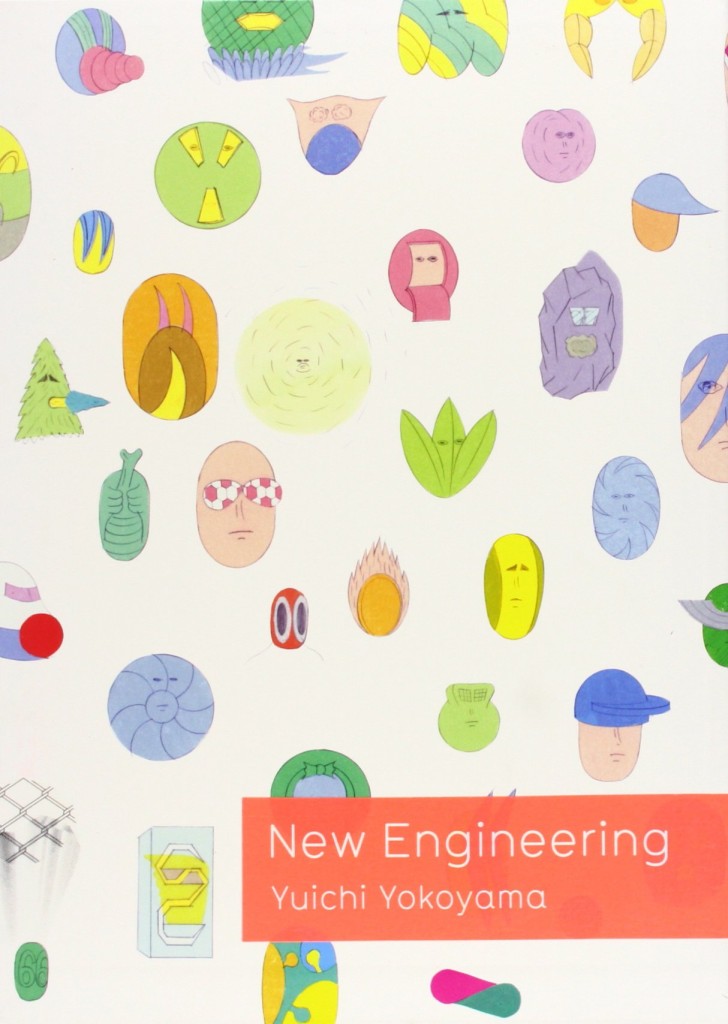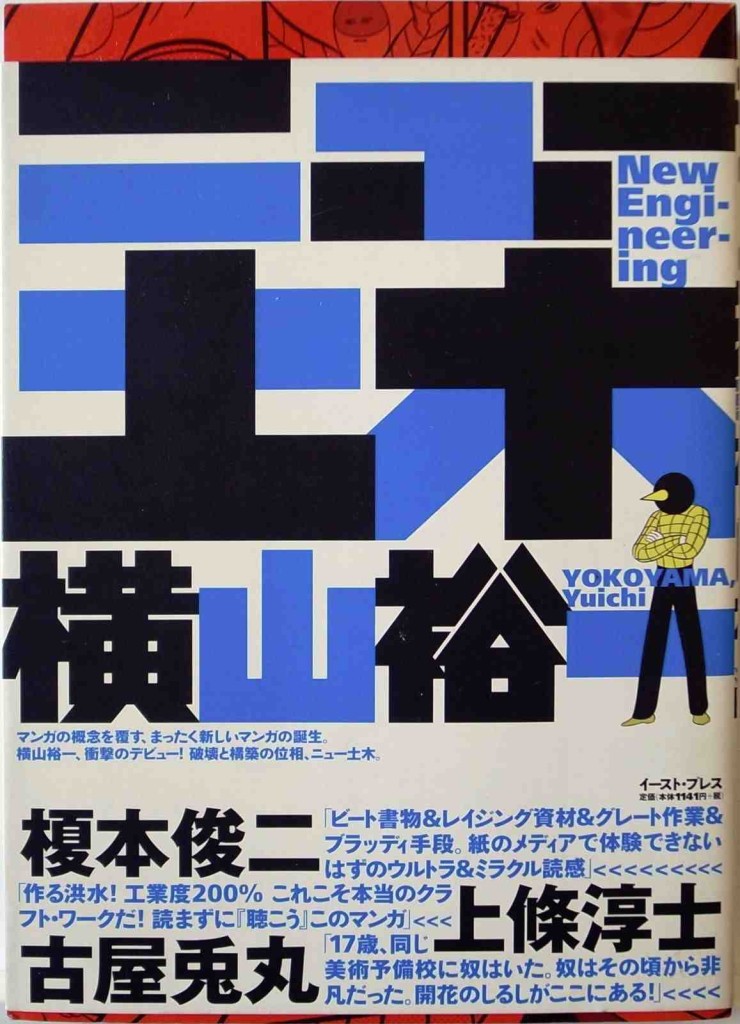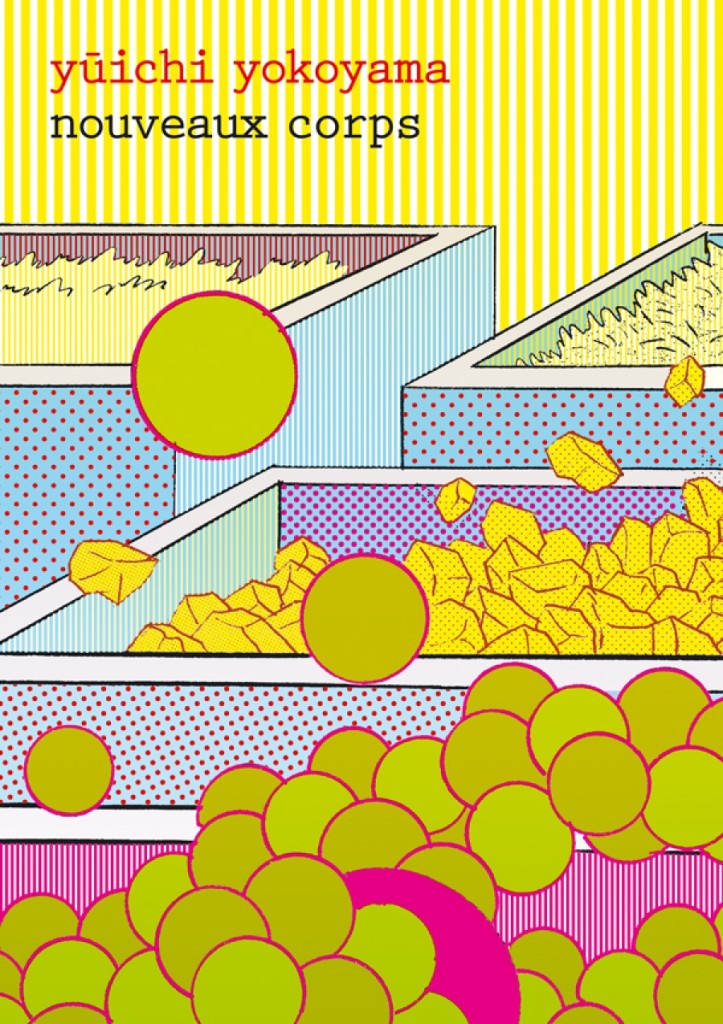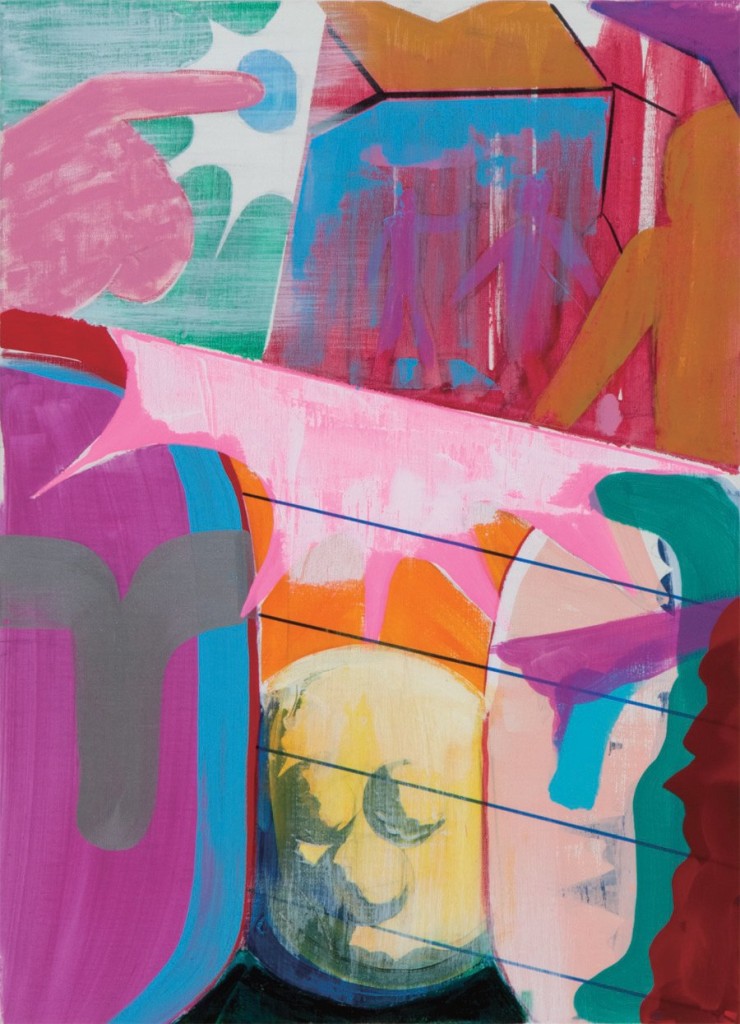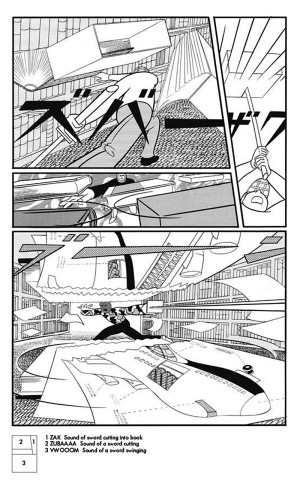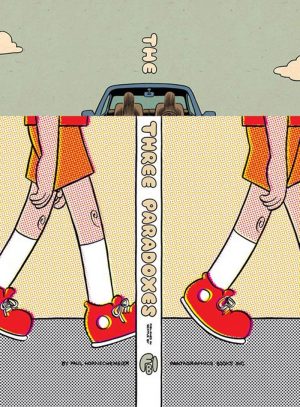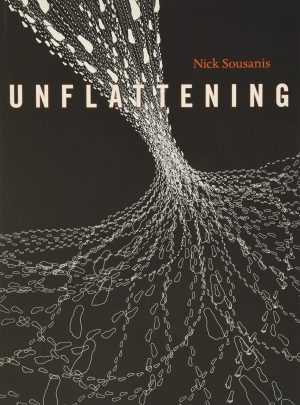Review by Woodrow Phoenix
In comics, all activity is a series of frozen moments. The artist decides how many frames a movement is divided into, and the way they present these moments are part of what makes up an artist’s style or distinctive point of view. Different kinds of story determine how the action is portrayed. For drama, for horror, for humour; to surprise you, to make you fearful, to make you laugh. But those frozen moments can be used in other ways. What if, rather than being a byproduct of narrative, they become the content itself? Have you ever been curious about what it looks like when a blade slices through a ream of paper? How does fabric behave when centrifugal force pops a man out of his shirt? Yuichi Yokoyama wants to show you. Concerned with phenomena rather than character and narrative, New Engineering resembles the output of a drafting machine: sequences presenting multiple views of an object in action that look like exploded product diagrams. In this book there are two forces at work, two kinds of exploration; the qualities of the object being acted upon and the capabilities of the thing doing the acting. The result is fascinating, original and almost entirely non-literary.
The first collection of Yokoyama’s strips in English, New Engineering features intrepid construction projects, frustrated missions, disastrous meetings, dangerous battles between teams of men dressed in elaborate and nonsensical outfits that mask their humanity. These generic beings function like chess pieces or soldiers. They swarm over a man-made mountain, decorating it with paint and markers. They build bridges across rivers. They fight each other in teams on land and in the air. But they aren’t enemies. They’re performers in an exhibit. A display of dynamic, spiky sound effects and complicated drawings of suspended objects, rendered with an abstracted geometric intensity that never lets up.
Sound effects are a key component in the creation of this frantic atmosphere. They are not translated in the panels themselves, but in footnotes underneath. PAKA is the sound of a copier lid being opened. BARIBARIBARI RIBARIBARIBA is the sound of pets eating wildly. SHLLL is the sound of a dinner plate flying. GAN is the sound of a refrigerator door being slammed open. DOSUN is the sound of a uprooted bush hitting someone in the gut. Happily, this separation of sound and meaning adds to the distancing effect Yokoyama wants to produce. As you think about what the words represent, you begin to read each frame as pure information or observation, like a time-lapse film of a construction site where girders, concrete and sheets of glass gradually become an office block.
New Engineering sounds violent, but it’s really not. It’s an elaborate choreography of set pieces. The characters are dancers in a ballet designed to allow Yokoyama to examine how forms change as they move through space. Weapons here are not for killing but for changing the state of an object. One typical sequence culminates in the introduction of a giant sword—four men are needed to carry it—being used to cut through several kinds of material at once. When everything is sliced, shattered, splintered, or flattened, one character says to the other, “This place is taken care of. Now onto the next floor.”
This remarkable work is essential reading for anyone interested in new ways to think about what can be done with comic strips. Yokoyama’s methodology may not seem serious. But New Engineering is an art installation on paper. The results are astounding.
